Reversing the Car Invasion to Become Most Sustainable City
This article focuses on an integrated urban strategy, made of five decisions, to stop the car invasion in favor of sustainable transit, and walkability. These decisions kept Vancouver, BC, Canada as the most sustainable city in North America with the lowest green gas emissions.
The city came with brilliant planning ideas accompanied by government investments to make public transit, biking, and walking the main and most convenient means to commute. In sink with these decisions, car trips within the city are made inconvenient.
A holistic approach of community planning, infrastructure planning, and eco density was planned with this goal in mind. What’s happening in contrast with most of the world investing in wide and high-speed roads (highways) to make car trips comfortable and fast!

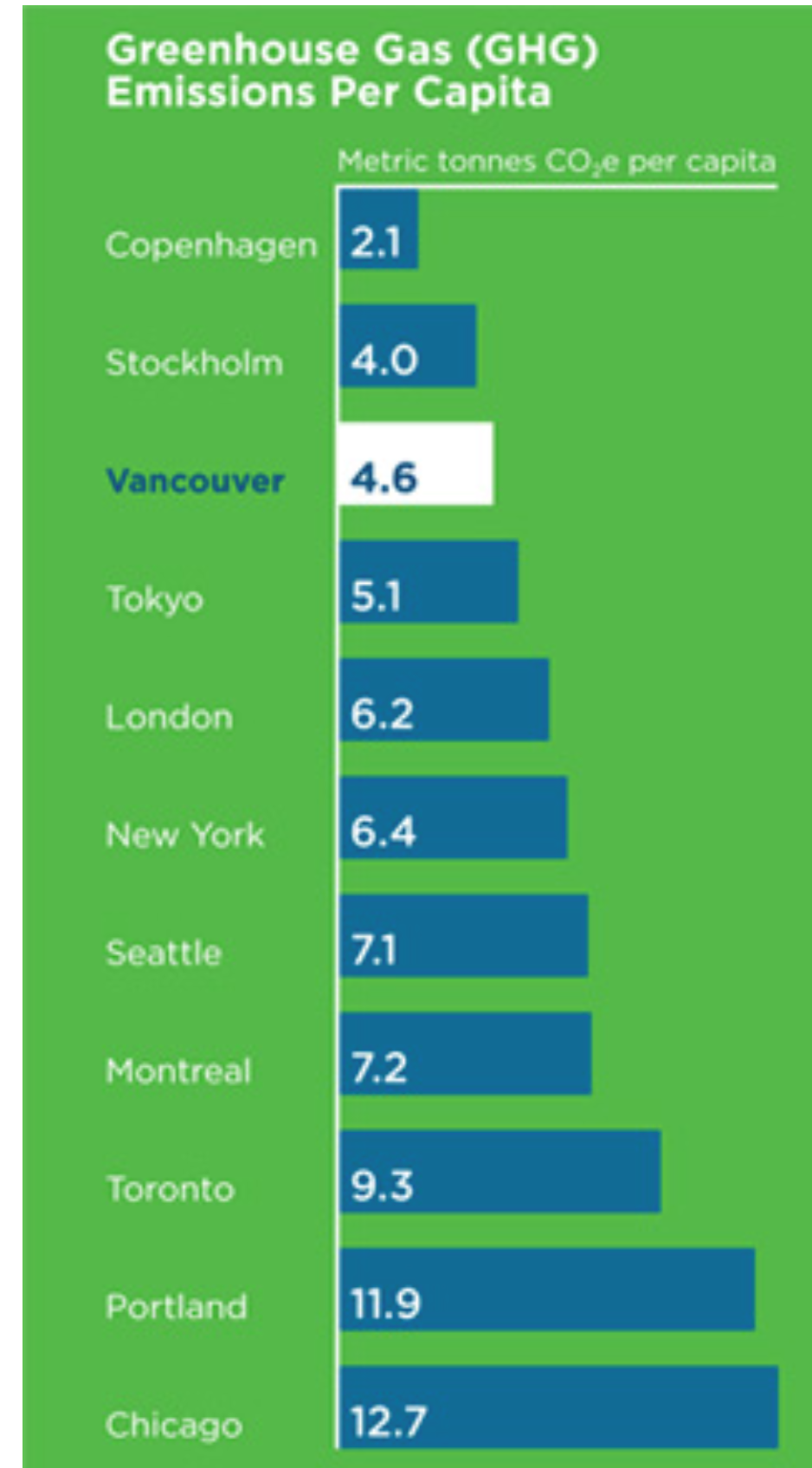
Integrated Planning Decisions
1- Eco density
Urban planning has been relied on in order to keep Vancouver’s city design as clean and efficient as possible, with a concept called eco-density. This refers to the policy of stopping urban sprawl while increasing density in targeted areas.
The key is targeting certain areas around SkyTrain/ public transit stations to be of high density. The purpose is to build as many dwelling units as possible within a five- or ten-minute distance from rapid and fast public transit making this kind of commute the ideal for many people.
The city has planned public transit to run through urban corridors, with big developments built on both sides of the Skytrain routes.
These urban corridors became the main veins for the city.
 The SkyTrain (elevated train) is reshaping the city by bringing eco density and life around stations
The SkyTrain (elevated train) is reshaping the city by bringing eco density and life around stations
2-The city invested in fast and convenient public transit running through these urban corridors, including fast SkyTrain routes, trams, and rapid bus routes. These are running from north to south and from east to west moving through most urban centres, with a competing speed. The advantages are the constant speed and the high frequency of these trains/buses, especially they are running on lanes not disturbed by cars.
You can assure your arrival on time when using public transit vs. using your own car. That’s in addition to making the public transit comfortable and air-conditioned.
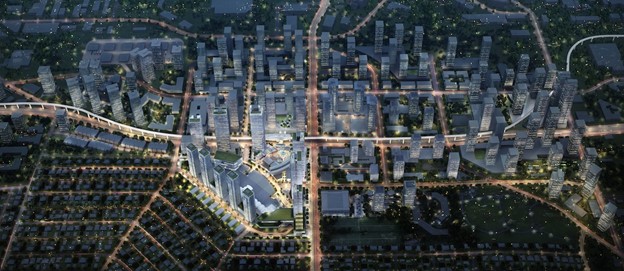
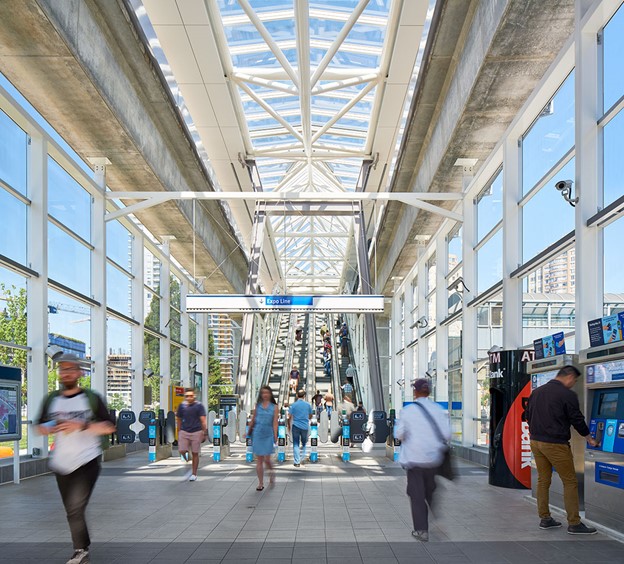
3-The city also features walkable city plans; city plans with green spaces, wide and interesting sidewalks, wide bike paths, and car-free or low-emissions zones in city centers (or at least timed road closures to cars in order to encourage walking, biking, and mass transit).
To make the walkable journey more interesting and satisfying, the city introduced commercial uses with shops and cafes in the middle of the urban centres/ urban villages. Now grocery stores and daily services are just a few meters away from each home, within five minutes walk.
The need for the car is becoming
Less and less, while the people are encouraged to walk.

Building a walkable with wide paths for walking and biking while closing down the car lanes
4-On the other hand, to discourage the use of cars the city refused, unlike other North American cities, to invest in building highways and wide convenient streets. That resulted in slow car speed vs. public transit.
According to Jan Gehl “if you make more streets better for cars you get more traffic. If you make more bicycle infrastructure you get more bicycles. If you invite people to walk more and use public spaces more, you get more life in the city”.

5-The city rejected adding additional parking areas, making it so challenging and inconvenient to find car parking. The parking areas are available in certain spots only, so the car trip comes within a long walking distance, in addition to being expensive and timed for a short period (e.g,2 hours maximum).
With a strong will and smart planning, the city is resisting and reversing the motor-car invasion by making its use the least convenient.
The identification of the problem and the sincere search for anti-car solutions, accompanied by government funding, is working to make the city more livable and beautiful.
When car traffic does not use the city and fills every space, there will be plenty of spaces for pedestrians, trees, and green parks. The city spaces will be for people, not cars.
This kind of planning, with continuous reminders of the purpose, changed gradually the people’s mindset to favor sustainable transit.
The people in the city will eventually see the benefits of having less cars and less pollution.
Unfortunately, many cities think that this experience will not happen in their region. In this regard we remember Jan Gehl saying:
“I have never worked in any city anywhere where I was not told at the start ‘you must realize that we have a special relationship to our cars in this particular region so it will never happen here. The same people who say this go on expensive holidays where the problem of the motor car has been solved.” Isn’t that true?
Every city can be sustainable. I wish that’s true and that’s the start!

Credits for images:
https://dailyhive.com/vancouver/the-amazing-brentwood-construction-photos-april-2018
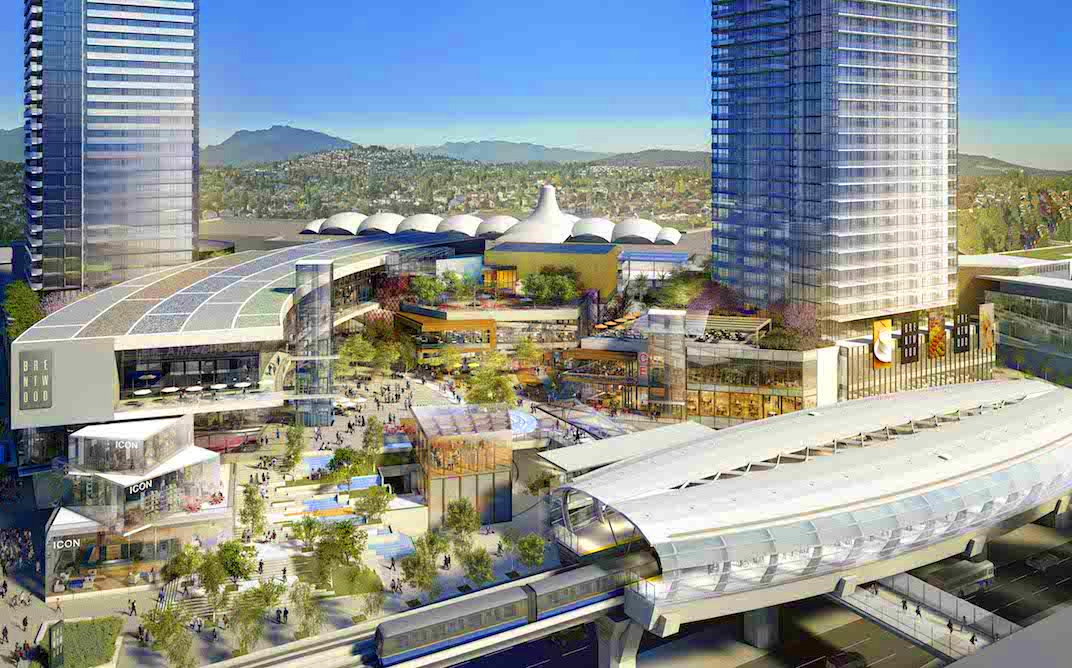

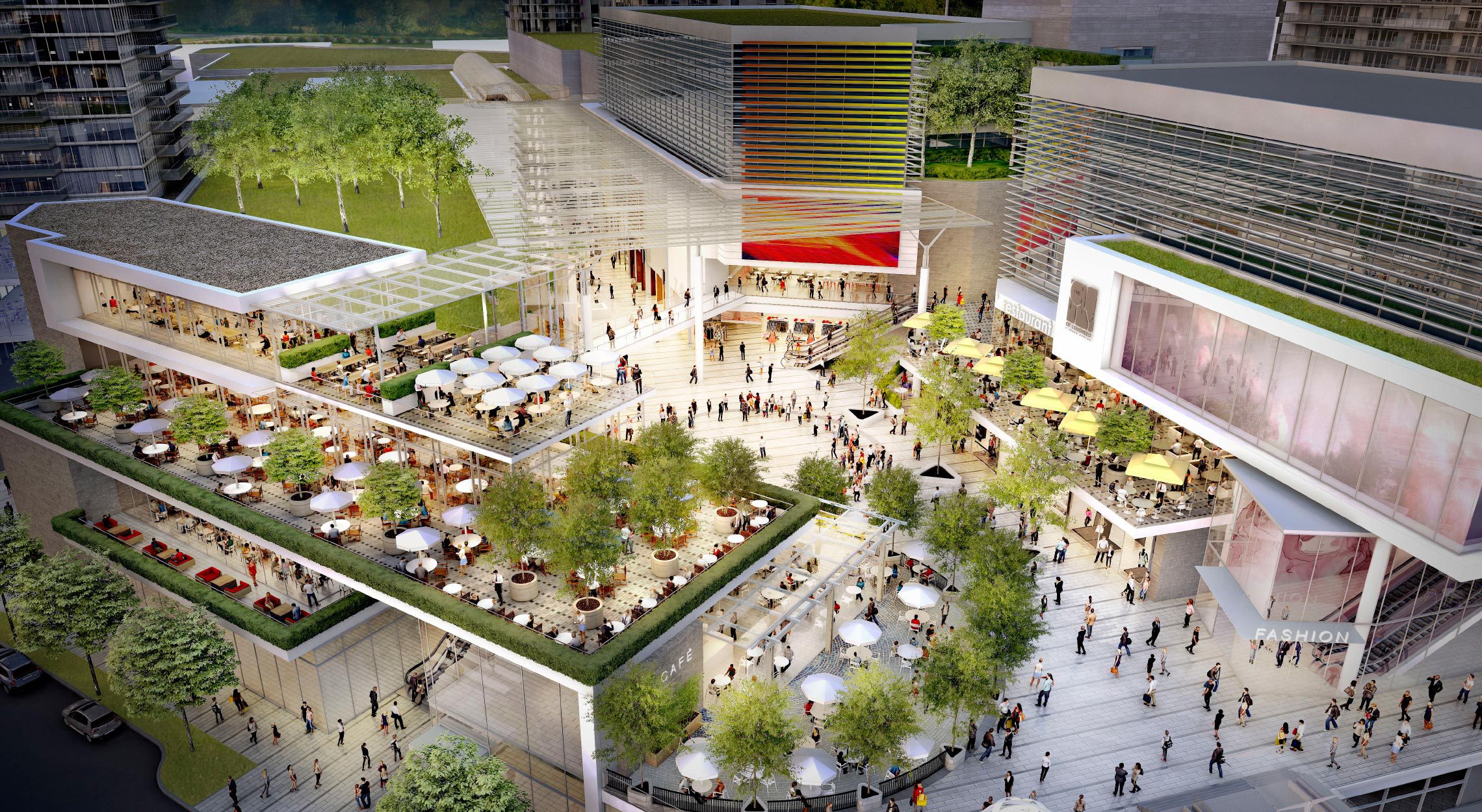

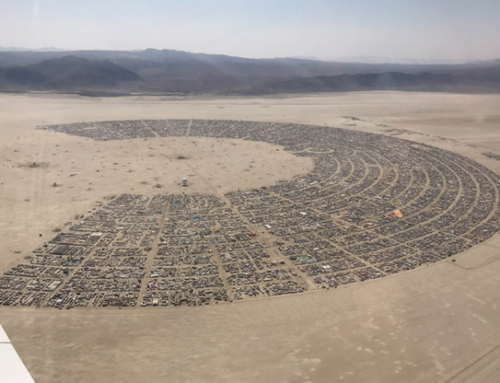

Saved as a favorite, I love your website!